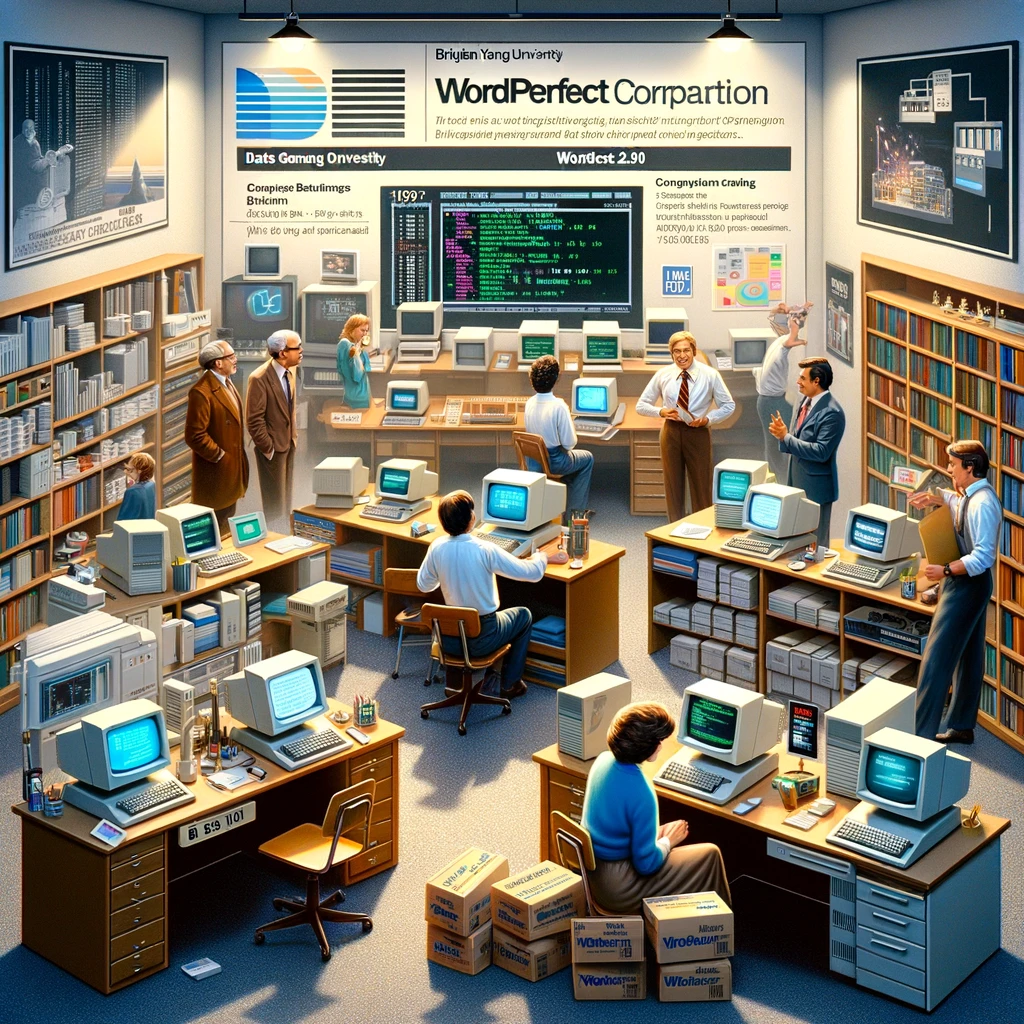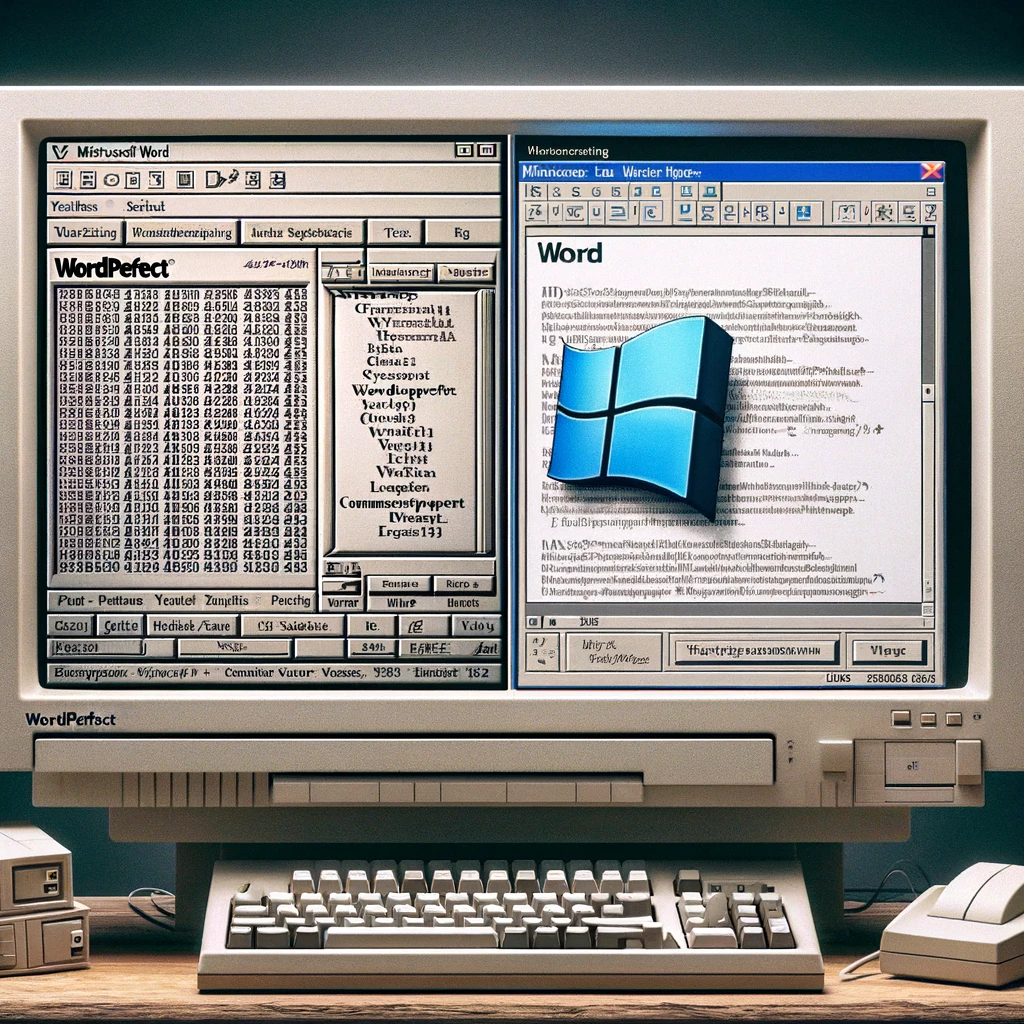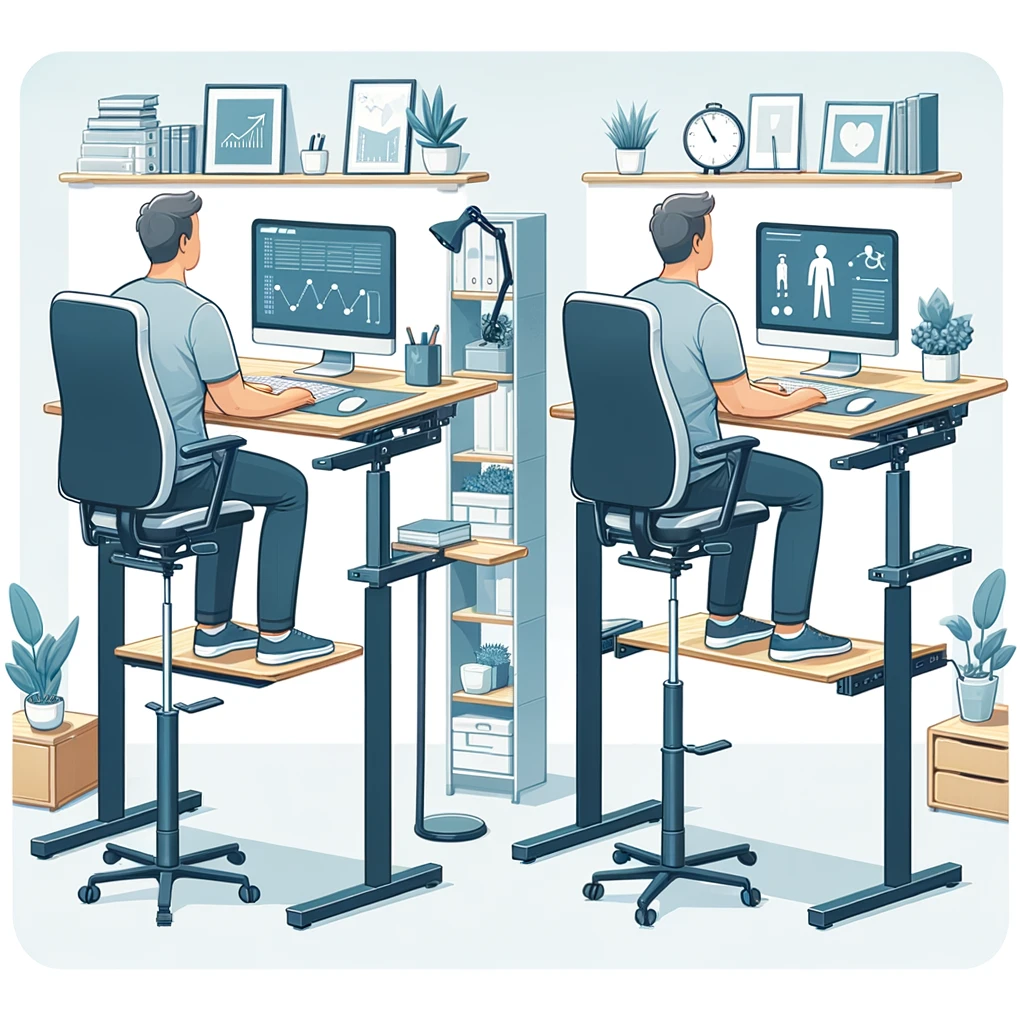Reading time: 8 minutes.
The history of WordPerfect, a pioneering word processing software, encapsulates a remarkable journey of innovation, dominance, competition, and eventual acquisition in the rapidly evolving landscape of computer technology. Initially conceived in 1979 by Bruce Bastian, a graduate student at Brigham Young University, and Alan Ashton, a computer science professor, WordPerfect began as a program for a Data General minicomputer system. The creators’ decision to retain ownership of their software led to the formation of Satellite Software International, Inc., which would later become WordPerfect Corporation.

The software’s first iteration for the IBM PC, released in 1982 as WordPerfect 2.20, marked the beginning of its ascendancy in the world of word processing. Characterized by its performance advantages due to programming in x86 assembly language, WordPerfect quickly distinguished itself from competitors like WordStar. The introduction of features such as expanded printer support and a user-customizable printer driver approach further solidified its market position. By the late 1980s, WordPerfect had emerged as a leader in word processing software, but its journey was not without challenges, particularly as it navigated the transition from DOS to Windows operating systems and faced intense rivalry with Microsoft Word.
Formation and Early Versions
The formation and early versions of WordPerfect represent a significant chapter in the history of computing and software development. WordPerfect’s genesis traces back to 1979, when Bruce Bastian, a Brigham Young University graduate student, and his computer science professor, Alan Ashton, developed a word processing program for a Data General minicomputer in Orem, Utah. Recognizing the potential of their creation, Bastian and Ashton retained the rights to their software and established Satellite Software International, Inc. to market it.
The first major breakthrough came in 1982 with the release of WordPerfect 2.20 for the IBM PC, the day after Thanksgiving. This release, which continued the version numbering from the Data General program, marked WordPerfect’s entry into the broader personal computing market. In its early stages, WordPerfect was programmed in x86 assembly language, which was a strategic choice due to the lack of C compilers for the IBM PC at that time. This decision conferred a significant performance advantage to WordPerfect over its competitors, most notably WordStar, which relied on slower DOS API functions for screen and keyboard access.
WordPerfect 3.0, released in 1983, brought further enhancements. It updated to support DOS 2.x, subdirectories, and hard disks, and significantly expanded printer support. The introduction of printer drivers in WordPerfect 3.0 was particularly innovative, allowing for compatibility with a wide range of printers and enabling users to customize these drivers.
Each subsequent version of WordPerfect built on this foundation. WordPerfect 4.0, released in 1984, and its successor, WordPerfect 4.2 in 1986, introduced features like automatic paragraph numbering and improved support for footnotes and endnotes, catering especially to legal offices and academia. By the time WordPerfect 5.1 for DOS was released in 1989, it had incorporated user-friendly elements such as pull-down menus and a print preview function, consolidating WordPerfect’s position as a market leader in word processing software.
These early versions of WordPerfect not only showcased the software’s technical prowess but also reflected the evolving needs and expectations of computer users in the 1980s, setting a high standard in the word processing software industry.

Rivalry with Microsoft and Windows Transition
The rivalry between WordPerfect and Microsoft Word during the late 1980s and early 1990s was a defining period in the history of word processing software. This era was marked by intense competition, as both companies vied for dominance in a rapidly changing technological landscape. The introduction of Microsoft Windows in 1990 was a turning point. As millions of DOS-oriented PC owners began updating to Windows, which offered a more visual and mouse-driven interface, WordPerfect faced the challenge of transitioning from its strong base in the MS-DOS environment.
Microsoft gained a significant advantage with the release of Word for Windows, which began making considerable gains in the word processing market. WordPerfect, despite holding an 85% share of the MS-DOS market for word processing software, was slower in adapting to the Windows platform. This delay was costly; when WordPerfect finally released its Windows version, it received lukewarm reviews and struggled to match the rapidly growing popularity of Microsoft Word in the Windows segment.
WordPerfect’s response to the Windows challenge included not just the development of WordPerfect for Windows but also a broader strategic transformation within the company. This transformation was signaled by significant management changes, increased spending on advertising (including their first national television ads), and forming partnerships and acquisitions to expand their business beyond word processing. Despite these efforts, by 1992, WordPerfect’s dominance was waning, with Microsoft Word becoming the number one selling word processor.
The rivalry culminated in various legal and market battles, including WordPerfect filing a lawsuit against Microsoft over advertising claims. The two companies eventually reached a settlement, allowing WordPerfect to use terms like “most popular” and “all-time best-selling” while Microsoft could call its Word program “best-selling”. This period in WordPerfect’s history exemplifies the challenges of adapting to shifting market dynamics and technological advancements.
Acquisition by Corel
The acquisition of WordPerfect by Corel in 1996 marked a significant turning point in the software’s history. By this time, WordPerfect’s market dominance had been significantly eroded, largely due to the intense competition with Microsoft Word and challenges adapting to the Windows environment. The acquisition followed WordPerfect Corporation’s brief ownership by Novell, which had purchased it in 1994 in an attempt to integrate WordPerfect into its suite of networking and software services.

Corel, a Canadian software company known for CorelDRAW, saw potential in WordPerfect as a cornerstone for its own suite of office applications. This move was part of Corel’s broader strategy to compete more directly with Microsoft’s Office suite. Corel’s acquisition included not only WordPerfect but also other associated applications such as Quattro Pro (a spreadsheet program) and Presentations (a slide show creator), which were integrated into Corel’s office suite offerings.
Under Corel’s stewardship, WordPerfect underwent significant changes. Corel aimed to revitalize the software, capitalizing on its strengths and loyal user base, particularly in legal and government sectors where WordPerfect had maintained a strong presence. Corel’s strategy included regular updates to WordPerfect, enhancing its compatibility with other office suite applications and improving its user interface to remain competitive.
The acquisition also reflected the changing dynamics of the software industry in the 1990s, characterized by consolidations and the growing importance of office suites rather than standalone applications. Corel’s decision to continue investing in WordPerfect demonstrated a commitment to diversifying its product portfolio and competing in the increasingly integrated software market.
Despite these efforts, WordPerfect faced challenges in regaining its former market position. The dominance of Microsoft Office and the rapid evolution of office software posed ongoing challenges. However, Corel’s commitment to WordPerfect ensured its survival and continued relevance in specific sectors, even in the face of daunting competition.
Legacy and Influence
The legacy and influence of WordPerfect in the realm of word processing and software development are profound and multifaceted. During the 1980s and early 1990s, WordPerfect stood as a paragon of innovation in the software industry, significantly influencing how word processors were designed and interacted with.
One of WordPerfect’s most enduring legacies is its pioneering use of a graphical user interface (GUI), which was a substantial departure from the then-standard text-based interfaces. This innovation made WordPerfect more user-friendly and accessible, setting a new standard for software design. This GUI approach, initially revolutionary, laid the groundwork for modern word processing software, which universally employs graphical interfaces today.
Another significant contribution of WordPerfect was its robust feature set, including the introduction of spell and grammar checking. These tools, now considered essential in word processing software, were groundbreaking at the time and greatly enhanced the functionality and appeal of WordPerfect. The software’s ‘Reveal Codes’ feature, which provided an unprecedented level of control over document formatting, was another innovation that set it apart from its contemporaries.
WordPerfect’s approach to software compatibility and cross-platform support also had a lasting impact on the industry. It was one of the first major word processors to be ported to multiple operating systems, including DOS, Windows, and macOS. This adaptability facilitated the widespread adoption of word processing software on personal computers and demonstrated the importance of cross-platform compatibility in software development.
Furthermore, WordPerfect’s influence extended beyond its technical achievements. It played a key role in shaping the competitive landscape of the software market, particularly through its rivalry with Microsoft Word. This competition drove rapid advancements in word processing technology and features, benefitting users worldwide.

In summary, WordPerfect’s legacy is evident in its groundbreaking interface design, feature innovations, cross-platform approach, and its role in shaping the competitive dynamics of the software industry. Its influence can still be seen in the design and functionality of modern word processors and the broader software market.
Lessons for Startups
The story of WordPerfect Corporation offers a rich tapestry of lessons for startups and entrepreneurs, showcasing both commendable successes and cautionary tales.
Adaptability to Market Changes: WordPerfect’s delay in transitioning to the Windows platform highlights the crucial need for startups to be adaptable and responsive to market changes. Microsoft Word, designed from the ground up for Windows, quickly gained a significant advantage. This underscores the importance for startups to anticipate technological shifts and adapt their products accordingly.
Customer-Centric Approach: Prioritizing the needs and feedback of the core customer base is vital. WordPerfect initially thrived due to its innovative features that catered to user needs. However, as the market evolved, it struggled to maintain this focus. Startups must continually engage with their customers to understand and address their evolving needs.
Effective Management and Decision-Making: The decline in WordPerfect’s product quality and market focus points to the significance of effective management. Startups should strive for clear, strategic decision-making and maintain a management team that can navigate through challenges while fostering innovation.
Continuous Innovation and Diversification: WordPerfect’s initial success was partly due to its pioneering features. However, as competition intensified, its innovations weren’t sufficient to retain market dominance. This highlights the need for startups to continually innovate and diversify their offerings to stay competitive.
Embracing Strategic Partnerships: Collaborating with industry players can be a powerful strategy. WordPerfect’s partnership with Borland International to release a suite of Windows programs was a move to compete with Microsoft’s suite offerings. Startups can leverage partnerships to expand their resources, reach, and capabilities.
Learning from Mistakes: Reflecting on past failures is crucial for future success. WordPerfect’s experience teaches startups to analyze their missteps critically and use these insights for better decision-making.
In essence, WordPerfect’s trajectory provides a multifaceted learning experience for startups, emphasizing adaptability, customer focus, effective management, innovation, strategic partnerships, and the importance of learning from past failures.





